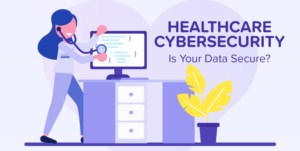Cybersecurity in Healthcare
The advancement in digital technologies, especially in the delivery of patient care, has dramatically added value to patient care. Still, the implication is that cybersecurity has become a natural and more pressing issue. Today, with advancements in technology, with healthcare practicing the ‘paperless’ way with electronic health records and more facilities using connected devices in treating patients, the risk of being attacked by cybercriminals is real.

The security of patient information is now a significant concern. Loss of information involves but is not limited to medical histories, social security numbers, and even financial details. This type of data is precious in the black market, and since healthcare providers keep such data in their systems, they become prone to cyber attackers. The impacts, however, are not limited to just simple dollar values; they erode patient confidence and disrupt patient care.

Security in general and in the healthcare industry in particular depends on the institutions’ having a clear and all-encompassing cybersecurity policy to protect patients’ information. Some of the protections include acquisition as data is in transit and data at rest, protection of a network including the setting up of the network, and guaranteeing that the systems in use no longer contain the vulnerability. Security should include access control measures, user authentication, and ongoing staff education, which form the basic security principles in a healthcare organization.

One of the rules that healthcare providers must follow, including the Health Insurance Portability and Accountability Act, is used to acknowledge patients’ information.
The failure to observe the legal provisions as prescribed attracts severe penalties and legal consequences.
In fact, advancements in technology in the healthcare arena have increased the functionality of protecting patient information, safety, and availability. Information technology security in the health sector is not for policy, training, and modern security mechanisms in addition to policy to meet the requirements of patient confidentiality and earn the trust that is required in the treatment process.
WRITTEN BY: AMEDICC.COM
PHOTO CREDIT: GOOGLE.COM

One thing is the fact that one of the most common incentives for utilizing your credit card is a cash-back and also rebate supply. Generally, you’ll have access to 1-5 back upon various acquisitions. Depending on the credit card, you may get 1 again on most acquisitions, and 5 again on expenses made at convenience stores, filling stations, grocery stores and also ‘member merchants’.